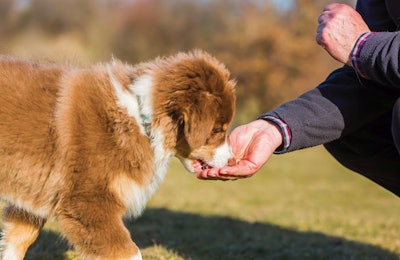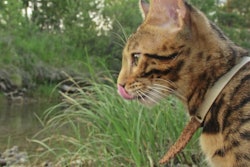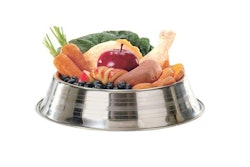
Human food trends and data show that consumers are seeking healthier choices even in indulgent categories like candy and snacks — and we’re seeing that concept carry over into pet treats and similar categories like toppers and mixers. Yet with pet obesity levels continuing to rise, especially in developed pet food markets, is “healthy indulgence” realistic, or simply the inherent contradiction implied in the phrase?
Smaller portions, functional ingredients
In human food, the concept plays out as smaller portion sizes — think mini versions of various popular candies — and also incorporation of functional ingredients such as antioxidants and vitamins. Thus, you see products on the market like Russell Stover Coconut Minis, coconut bites covered in dark chocolate and bearing a message of beneficial flavanols, according to Lynn Dornblaser, director of innovation and insight for Mintel. Another example: Snap Infusion’s Smartcandy vitamin-infused, single-serve packs.
“People want to indulge themselves but still feel like they’re not indulging that much or they’re still taking care of themselves,” said Florencia Moreno Torres of Innova Market Insights during ISM 2018, a large trade fair for the sweets and snacks industry, in an interview by FoodIngredientsFirst.com.
But with 39 percent of the U.S. adult population being obese, according to the Centers for Disease Control (and that’s not even counting the number of overweight people), is it really possible to, well, have our cake and eat it, too? Or, if we’re going to indulge ourselves anyway — and let’s face it, most of us are — is it better that we at least have healthier options?
Are healthier pet treats healthy enough?
Our pets are our family, so naturally, we want to treat and indulge them, too. During the Petfood R&D Showcase 2018 at Kansas State University (KSU), Dornblaser said 56 percent of U.S. consumers surveyed by Mintel give treats daily to their pets.
Some owners at least look for healthier choices, with 56 percent seeking treats providing added nutrition or, specifically, helping maintain cognitive function (35 percent) or including superfoods (26 percent), Dornblaser said. Backing that up, Packaged Facts data from 2017 showed U.S. dog and cat owners looked to address specific health and wellness concerns with pet treats — for example, dental or oral hygiene, skin or coat health and joint health.
Yet, even with these good intentions, there can be a dark side to the popularity of pet treats, said Greg Aldrich, Ph.D., KSU research associate professor and coordinator of its pet food academic program. And that’s the continually rising incidence of pet overweight and obesity: up to 60 percent of U.S. cats and 56 percent of dogs in 2017, according to the Association for Pet Obesity Prevention (APOP). Global estimates are similar, said Better Cities for Pets, citing a survey conducted earlier this year among pet owners in Brazil, China, Russia, U.K. and U.S.
“Fluffy people have fluffy pets, and vice versa,” Aldrich commented during the Petfood R&D Showcase.
Underlying problem for pets: the ‘fat gap’
Part of the problem lies with pet owners’ lack of comprehension or awareness of how many total calories their specific pets should be consuming daily and how many calories treats, toppers or human food tidbits contribute to a pet’s daily intake. Calorie statements on pet food and treat labels can help, but they aren’t always straightforward or easily understandable by consumers.
The main issue, however, may be the all-too-human tendency toward denial: Ollie, a company offering customized dog food, just issued a report based on data from its customers and website users showing that only 17 percent consider their dogs overweight, far below the 56 percent level reported in APOP’s 2017 survey.
In 2016, APOP reported that 81 percent of U.S. pet owners characterized their pets’ weight as healthy and normal. That means only 19 percent considered their pets overweight or obese, compared to actual clinical survey results of 54 percent of dogs and 59 percent of cats that year. APOP surveys in previous years have highlighted similar findings of what its experts call the “fat gap.” (The 2017 survey didn’t report this information. Note that the 2018 survey is open through the end of this month.)
Needed: education, awareness and tough love
Here’s a complicating factor: like all other human beings, we pet owners are emotional creatures and our pets definitely play on our emotions, typically unintentionally. For example, Mintel data shows some owners give treats to make up for what they may perceive as their shortcomings as “pet parents”: 21 percent of U.S. consumers said they sometimes bestow treats because they feel guilty for not giving their pets enough attention. And we all can relate to succumbing to a cute furry face complete with big, sad dog or cat eyes, perhaps accompanied by a pitiful whine or meow.
As with our own health and nutrition, it comes down to owner education and awareness about the risks of pet obesity and the appropriate, pet-specific amounts to feed of not only treats but also the main diet. That, plus what may be the most useful emotion in this situation: tough love.


















